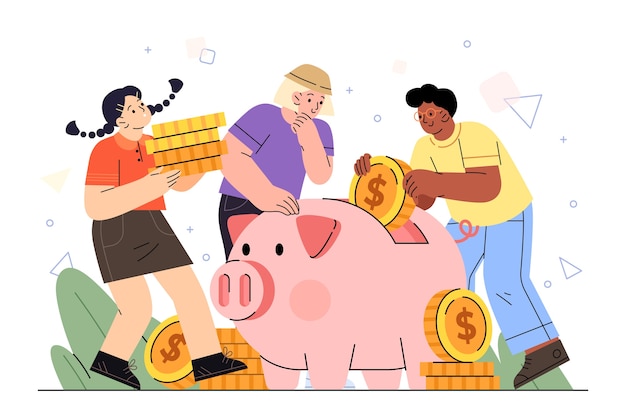
Putting money aside for savings isn’t always an easy task, particularly when dealing with financial constraints, but it’s worth it in the long run. A robust savings base acts as a safety cushion, shielding you from unforeseen downturns or emergencies. Today, we’ll explore some savings techniques to assist you in reaching your financial objectives.
Why is a savings strategy vital? The benefits of a sound savings plan are multiple:
Financial Protection: A savings plan is a key tool in building a financial safety net. It cushions you from sudden expenses such as health emergencies, vehicle repairs or unexpected layoffs.
Emergency Readiness: Savings act as a buffer for unforeseen situations, enabling you to cope with emergencies without resorting to credit or loans.
Realizing Goals: A savings strategy propels you towards your financial goals. Be it purchasing a house, starting your own venture, or going on a dream holiday, it provides the means to make your dreams a reality.
Emotional Well-being: The knowledge of having backup savings can alleviate financial anxiety, bringing you peace of mind and allowing you to concentrate on other life matters.
Independence and Flexibility: Savings introduce financial independence. Stashed away funds allow you the liberty to make choices based on your preferences instead of immediate financial pressures.
SIX UNCONVENTIONAL SAVING TECHNIQUES
Implementing minor modifications in your saving routine can lead to significant results. Here are six strategies to begin saving money instantly.
SET UP AUTOMATED TRANSFERS
Creating an automatic savings plan allows you to save a portion of your earnings every month without the hassle of remembering to transfer money. This method is particularly beneficial when your savings account is earmarked for specific objectives like establishing an emergency fund, planning a vacation, or saving for a down payment.
Most banks facilitate auto-transfers between your checking and savings accounts. You have the liberty to decide the timing, amount, and destination of these transfers. This method saves you from pondering it over incessantly, reducing the likelihood of spending the money instead.
CUT DOWN ON DINING OUT
Eating at restaurants, given its cost, is one of the first expenditures to trim down if you aim to amplify savings. Opting to cook at home more often, decreasing the frequency of dining out or limiting restaurant visits to fit your monthly budget can save you a decent amount.
Ordering appetizers or sharing a main course can also save you some bucks. Planning dessert at home or skipping drinks and dining out can further stretch your budget.
REFRAIN FROM HASTY PURCHASES WITH THE 30-DAY RULE
The 30-day saving rule is a helpful tool to control impulsive purchases and bolster your savings. You provide yourself with a ‘cool-down’ period of 30 days to reconsider your decision between spotting an item and the actual purchase. If waiting for 30 days seems cumbersome, you can shrink the period to 24 or 48 hours.
TRIM YOUR ENERGY BILLS
Being mindful of your energy consumptions can offer simple ways to economize your utility bills. Multiple small and significant modifications in energy usage can dramatically decrease your utility costs. Sealing any insulation leaks in your home, swapping old appliances with energy-efficient ones, or moving to a smart thermostat can pool into substantial savings in the long run.
REDUCE HIGH-INTEREST DEBT
Allocating how much to save and how much to exempt for paying off debts is a recurrent dilemma. Debt payments can weigh heavily on your budget. So, clearing high-interest debt more rapidly via additional payments through methods like the snowball or avalanche can decrease total interest paid, and release you from this financial burden earlier.
After repaying a debt, the funds which would have gone into repaying the debt can now be diverted into savings. If you lack disposable income for additional payments, consider taking on a side job to earn extra money.
ATTEMPT A MONTH OF FRUGALITY
A month of frugality challenges you to abstain from spending on non-essentials for one full month. During this time, you only spend on things you essentially need, cutting out all unnecessary expenses. But remember, devise the frugality parameters at the outset and stick to them. Having a partner to hold you accountable or participate in the challenge might prove beneficial in sticking to the challenge.
Remember, a strong savings base acts as a bedrock of your financial well-being. It equips you with security, flexibility, risk cover for any unforeseen expenses, and the resources to pursue your financial objectives. So, don’t hesitate to experiment with the strategies mentioned above to find the combination that suits your lifestyle and financial aspirations. Just remember, saving is a gradual process, and small steps can lead to significant outcomes over time. Incorporating these into your routine will instill a productive savings behavior into your everyday life.


